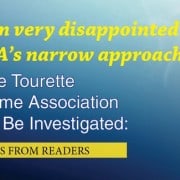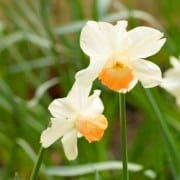Can a Plant Leaf Extract Stop Chronic Tics?
Editor: The plant described here, Clerodendrum inerme, is a shrub grown in the East and parts of Australia. It is used as traditional medicine in some of these countries for skin diseases, beriberi, asthma, and rheumatism, among other conditions. It is considered to have antifungal properties, and shows promise of being chemoprotective. Interested families may wish to consult an experienced Chinese medicine specialist or herbal practitioner for more details. Please note that the patient described here has a history of epilepsy along with chronic tics. Source: Journal of Child Neurology 2009; 24; 887
A teenage girl with a chronic motor tic disorder showed dramatic improvement and later remission of tics after taking a leaf extract of Clerodendrum inerme (L) Gaertn at the National Taiwan University Hospital. Authors of an article, published in the Journal of Child Neurology, report that no side effects were seen during a follow-up period of more than two years. The patient had not responded to standard medications for tics. This appears to be the first report on Clerodendrum inerme reducing tics. See abstract.
In the journal report: Intractable Chronic Motor Tics Dramatically Respond to Clerodendrum inerme (L) Gaertn, authors Fan, Huang, and Chiou describe the teen as presenting with strong intractable, jerky movements of four limbs for four months. Tics included intermittent shaking of the limbs, trunk, or abdominal wall every day, causing school absences. Haloperidol and diazepam were not effective in stopping these tics.
Less extreme chronic motor tics began several years prior, for which medications were tried. Medical history includes focal seizures from a young age. She also complained of dizziness, headaches, and nausea. EEG and brain tomography were normal. Some medications tried included haloperidol, alprazolam, lamotrigine, clonazepam, clonidine, pergolide, sulpiride, biperidal, and risperidone. She was diagnosed with mild mental retardation and teased by classmates.
The Mother’s Suggestion: Clerodendrum inerme
At the suggestion of this patient’s mother, Clerodendrum inermewas tried based on anecdotal reports of it being helpful for neurological disorders. She began taking an extract of the ground leaves of Clerodendrum inerme at age 14 years 8 months. The authors report, “Her tics subsided dramatically an hour after taking 1 dose of the extract, which was made from 50 pieces of large leaves or 100 pieces of small leaves, mixed with 100 mL water (500 mg/mL). Honey was added because of the bitter taste.”
Success: Tics stop and school functioning improves
The extract was taken twice a week at first, then once every two to six months when tics resurfaced. All medications were stopped two months into treatment except lamotrigine (50 mg twice a day) and clonazepam (0.5 mg twice a day) which were needed to prevent seizures. Two years later, no obvious side effects were observed clinically and lab work was normal.
The student is now leading a normal school life in a regular class of a senior high school.










Where can i buy the Clerodendrum inerme? thanks, this is a serius study or where is the found of this notice?
This is a published report in a reputable journal on the benefit of Clerodendrum inerme for tics. However it is a case report, a single user’s experience. There are many medicinal uses of the plant, but limited studies on it for tics. We would recommend consulting a specialist in Chinese medicine if you want to try this.
Where can you purchase clerodendrum intermediate leaf extract?